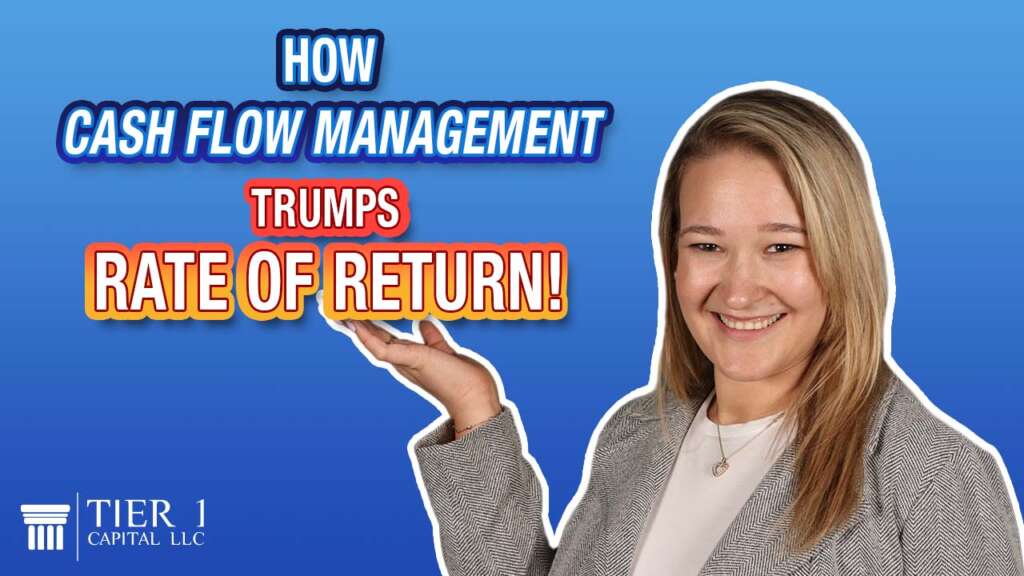
In America, we tend to view our financial lives in terms of “money in, money out.” You go to work, earn money, and then use that income to pay bills. It’s a cycle most people are familiar with. However, when we’re taught about finances, the focus is often on the rate of return—how much interest can be earned on savings or investments. But here’s the problem: if your cash flow is inefficient, there won’t be anything left to save.
That’s what we’re discussing today—the difference between cash flow and rate of return, and why optimizing your cash flow might be the most important financial move you can make. At Tier 1 Capital, we’ve dedicated ourselves to helping people regain control of their money, and our approach focuses on cash flow, not just rate of return.
Here’s the simple truth: you can’t spend rate of return. Cash flow, on the other hand, is the lifeblood of both your family and your business. When you focus on cash flow—and more importantly, maintaining control over it—you gain clarity and confidence in your financial decisions. Rate of return is unpredictable and often involves locking up your money, making it inaccessible when you need it most. But when you focus on cash flow, suddenly, a world of possibilities opens up.
One of the biggest areas where we help families and businesses is by analyzing their current cash flow. Many people have inefficiencies in their financial systems—money leaks, so to speak. These are like holes in a bucket where cash slips through your hands each month without you even realizing it. Our goal is to plug those leaks, even if it’s just a small amount at a time, so your money stays in your control.
Think of it this way: when you plug the holes, less money leaks out. Now, that money remains with you, building up over time and becoming available for future purchases or investments. The key is to make that money work for you, not for financial institutions, advisors, or large corporations.
We all know the importance of saving, right? No matter how much you’re saving—whether it’s 5%, 10%, or 20%—there’s always a sense that you should be saving more. And that’s even harder today with rising inflation and interest rates. So how do you maintain a manageable cash flow while still saving for the future? By identifying inefficiencies in your current system and redirecting that money to a place where you have liquidity, use, and control over it.
Once you start building up a pool of cash, you gain options. You won’t need to rely on high-interest credit cards (which can have rates of 30% or more!) or take out loans with unfavorable terms. You’ll have something in your back pocket—a financial safety net that you’ve built and can leverage when needed.
At Tier 1 Capital, we recommend placing that money into specially designed life insurance policies, structured for cash accumulation. Why? Because not only does your money continue to grow with compound interest, but you can also borrow against the policy at much lower rates—currently around 5.5% to 6%. Compare that to today’s mortgage rates, which are often over 7%, or even home equity lines of credit that can go up to 9.5%.
The real advantage of these policies? They offer flexible, unstructured loan repayments. When you take a policy loan, there’s no strict repayment schedule. Yes, you should pay back the interest annually, but beyond that, you get to decide how and when you repay the loan. If you’re used to paying a fixed amount to a credit card company each month, you can now direct those payments toward your policy loan—and if you have extra cash flow, you can repay it faster. The faster you pay it back, the quicker you can borrow against it again.
This structure allows you to stay in control of your cash flow on multiple levels, making your money work for you in the most efficient way possible.
If you’re interested in learning more about how this process can work for you, your family, or your business, visit our website at tier1capital.com, where we offer a free web course on cash flow management.
Remember, it’s not about how much money you make—it’s about how much you keep. And that’s what truly matters.
